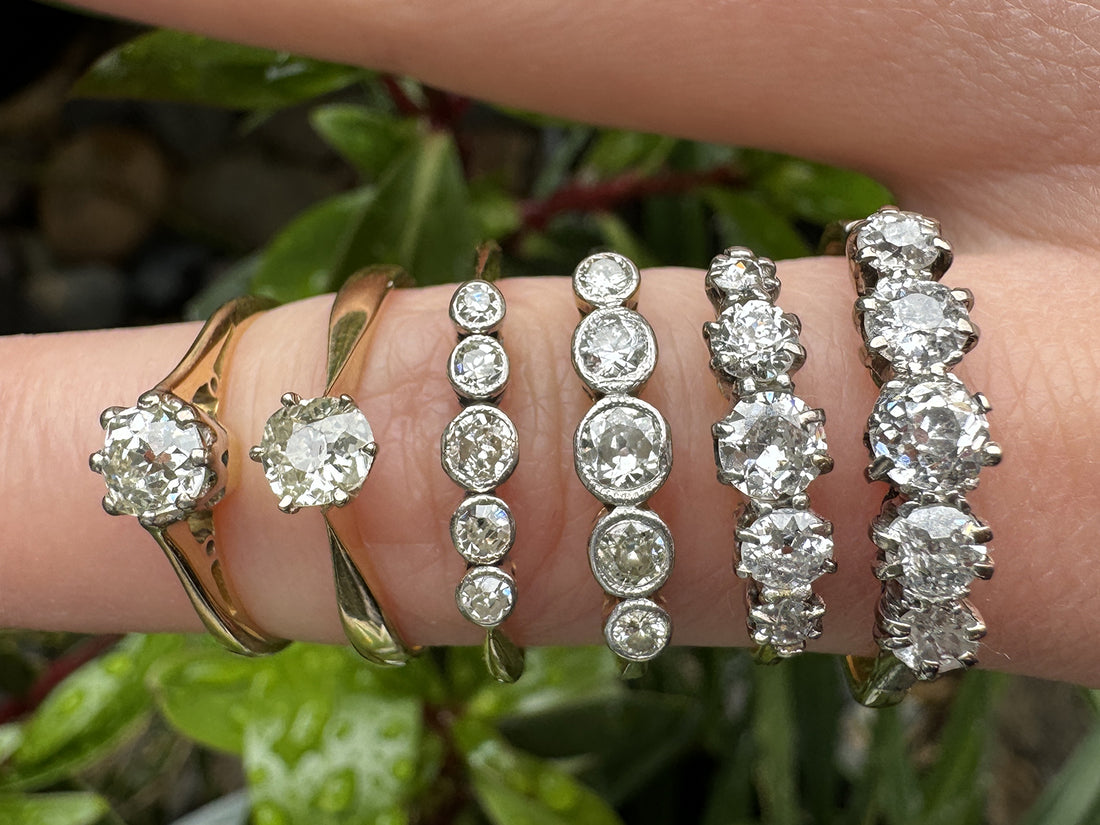In the modern world of diamonds, one cut reigns supreme - the round brilliant. But it wasn’t always this way. Until the twentieth century and its standardised and calibrated diamonds, diamond cutters were cutting diamonds by hand and to their own artistic standards, captivating diamond lovers of the Victorian and Edwardian periods with a dazzling array of variations. Their creations turned heads with unique proportions which sparkled bright in candlelight. The cuts to emerge from this time reflected the individuality of the cutter and prioritised the retention of rough diamond weight rather than uniformity. These diamonds, known collectively as ‘old cuts’ or ‘antique cuts’ are now sought after by collectors for their unique beauty.
Here's a rundown of the main types of old cut diamonds:
 |
Rose cut: A flat cut used to make use of pieces of diamonds resulting from cleaving. The number of facets varies from just 3 to up to 24. Like single cuts, they are often seen in smaller sizes as accent stones, but sometimes take centre stage in spectacular solitaires! |
 |
Single cut: A simple diamond cut, sometimes known as ‘eight cut’ and roughly octagonal in shape. This cut is often used for smaller sized diamonds, including accent stones. Can have an extra facet (culet) at the bottom which is sometimes seen in older single cuts. |
 |
Old mine cut (OMC): Cushion shaped with a large table, culet and dramatic irregular proportions, these are real showstoppers! Sometimes referred to as ‘Old Brilliant’ or ‘Old Miner’, these beauties are found in many antique pieces from the Victorian and Edwardian periods. |
 |
Old European cut (OEC): With a round profile, more precisely placed facets and a smaller culet and table the OEC is romantic and refined take on the old mine cut diamond. It crosses over chronologically with the OMC, but is a step closer to modern round brilliant. |
Diamonds are an incredible accident of geological forces millions (or billions!) of years in the making. Old cut diamonds highlight the unique beauty of diamonds and are perfectly imperfect. They’ve survived the changing tastes because they capture something more enduring and are now rare pieces sought after by collectors.
They come from a time before fast fashion and scientific proportions and are a little piece of history that still shine bright all these years later!

